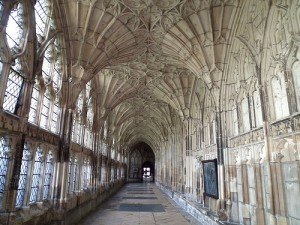There are two kinds of silence for campers: there’s the pleasant quiet of dusk, interrupted only by “the loon’s wild, haunting call”, and there’s the rustle of unexpected noises outside the tent as one tries to fall asleep—each noise surely proclaiming the approach of a bear, n’est-ce pas? So too are the two kinds of silence in our services: one that makes space for God, and one that makes people wonder just who it is that forgot it’s that person’s turn to do something in the liturgy.
I think there are far more kinds of silence in both wilderness and sanctuary, actually, than those two binary pairs I’ve just described. I do think, though, that silence is one of the hardest things for a community to do well, together. Our liturgical books make it clear that silence has a role to play in our corporate worship; we see the following rubrics in the Eucharist service that begins on page 185 in the Book of Alternative Services:
- before the collect: “The community may pray silently.” (187)
- after the first reading: “Silence may be kept” (187)
- after the second reading “Silence may be kept” (187)
- after the sermon: “A silence for reflection may follow” (188)
- after the invitation, and before the confession itself: “Silence is kept”
- after the Lord’s Prayer: “Silence” (211)
- “At the conclusion of the communion, silence may be kept” (214)
- before the prayer after communion: “Standing, the community prays in silence”
I find it interesting that most of these silences are optional: “may” is the key word in most of them.
Three times, though, we are told we have to keep silence: before the confession[1], after the Lord’s Prayer, and before the Prayer after Communion. Silence is integral to what we do when we gather, and it can be obvious eight or more times—or at a minimum, three.
The introduction to the rite, which explains sources and rationales, doesn’t do much to elucidate the whys or the hopes for these many silences. About the first suggestion, it declares that “The Collect of the Day concludes the entrance rite and provides the transition to the readings for the day. A short silence is suggested before the opening prayer to allow the community to gather its thoughts.” (174—75) The rubric about the silence near the sermon tells us that we keep silent “for reflection,” presumably upon the readings of the day and how they’ve been unfolded in the sermon itself.
It’s the rubric after the Lord’s Prayer, though, that catches my attention every time: “Silence.” Not “is kept,” nor “for reflection” nor “may be kept” nor named for prayer, but the simplest of all possible directives: Silence. I can’t help but hear it as an echo of psalm 46.10: “Be still, and know that I am God! I am exalted among the nations, I am exalted in the earth.” As we meet the One who comes among us in the Eucharist, and just before the breaking of the bread, this is the kind of silent adoration that is at the heart of what we do when we gather.
Because these required silences and these optional silences are part of our shared liturgy, we’re asked to do them well, to try to grow into having them be entirely moments of gift as when we get to hear those loons. There are any number of ways we can helps ourselves to live these silences well. As just one example, I’ve visited a number of parishes that use bells, gongs, or singing bowls to indicate the beginnings and ends of silences—and so there’s less worry that someone’s forgotten “what’s next.” These work better with the silences after the readings and sermon, but a deep intentionality that each of us—not just presiders, but each of us—can hold will encourage us to live into those spaces for silence in our liturgy.
Some years ago, I came across a wonderful sentence attributed to Jeremy Taylor, Bishop of Down and Connor in the seventeenth century.
There should be in the soul halls of space, avenues of leisure and high porticoes of silence, where God waits.
Let’s share some of our experiences in the forum in the topic: “Talking about Silence”
How do you make space for silence in your life? In liturgy? How does your community help its liturgy to enter into silence well? How has silence been a gift to you?
[1] Although the confession is itself optional: it can be replaced by a petition in the Prayers of the People, or by beginning the service with “A Penitential Order” (216—17)


